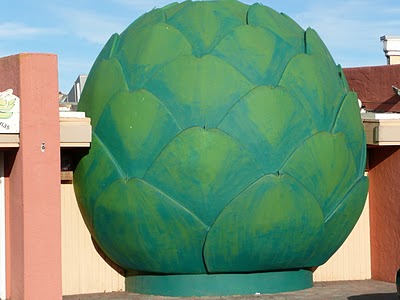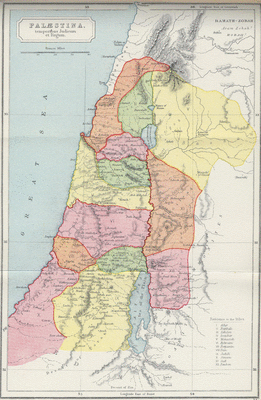Availability: Amazon, Los Gatos, San Jose, Santa Clara County
Our member Marilyn Katz writes:
The Book of Jewish Food is a comprehensive culinary history of the Jewish People, telling what we have eaten, where we have eaten it, and how we have prepared it. The book is rich in history and recipes, written in an engaging manner.
Roden arranges the book by geographic and cultural categories, including Ashkenazi, Sephardi, India, China, Ethopia and and parts of of the Middle East. This latter region, known as the Levant, includes distinct cultural and ethnic groups, including Jews, Arabs, Circassians, Armenians, Iranians, Assyrians, Maronites, Bedouins, Kurds, Druze and Turks. The Levant[1] is known by some as the Cradle of Civilization. Jewish culture has been important to this part of the world since the beginning of our recorded history.

You may wonder why there is a photo of The Giant Artichoke Restaurant in a book about Jewish food. Keep reading.
At present there is a only small Jewish community in Italy due to Fascist racial laws of 1938 and Nazi deportation. The community is integrated and assimilated into Italian society. I was surprised to learn that the Jewish presence in Italy is the oldest in Western Europe and was uninterrupted for two thousand years. Until recently however, almost no Jewish foods were known aside from carcioli alla giudia – artichokes in the Jewish style – or as we say, deep fried artichokes. You can look at this YouTube video to learn more.
Information about Ashkenazi food, the Jewish Calendar and life cycle events seemed very familiar, as though Roden had researched my family and was writing about us. Every food and food name was familiar. This was in stark contrast to my experience when reading about Sephardic food and recipes from other areas – the names and even the ingredients were unknown to me.
Her comments made me want to understand how our people could move from place to place, starting with Exodus, and bring our cuisine along. We wanted comfort food, but Exodus gave us matzo. If we had matzo, we could make matzo brei, matzo kugel, matzo pancakes. If we ran out of matzo, we substituted potatoes. No potato, use noodles. Roden gives numerous examples of how we adapted our foods as we moved from country to country, and how we exchanged cooking ideas with local people as we traveled the Silk Route.
I recommend The Book of Jewish Food to anyone who is interested in either Jewish food or Jewish history. It is easy to read and provides a wealth of information. There are numerous illustrations in sepia and the book is over 600 pages long. The Book of Jewish Food provided me with a pleasant read, while increasing my knowledge of the historical and geographic experiences of the Jewish people.
-
The map and information below are not part of this book. I have provided them to give a geographic understanding of major areas discussed by the author.
By N.S. Gill, About.com Guide
Maps of the LevantThe Levant – Biblical Israel and Judah – Palestine Map
From The Atlas of Ancient and Classical Geography, Samuel Butler, Ernest Rhys, ed. (1907, repr. 1908)
The term Levant is not ancient, but the area covered and shown in these maps is. Like “Anatolia” or “Orient,” “Levant” refers to the area of the rising of the sun, from the perspective of the western Mediterranean. The Levant is the eastern Mediterranean area now covered by Israel, Lebanon, part of Syria, and western Jordan. The Taurus Mountains are to the north; the Zagros Mountains, in the east, the Sinai peninsula, to the south. In antiquity, the southern part of the Levant or Palestine was called Canaan.


Pingback: Falafel, a secret Israeli husband and failing a Saudi security checkGill Watson